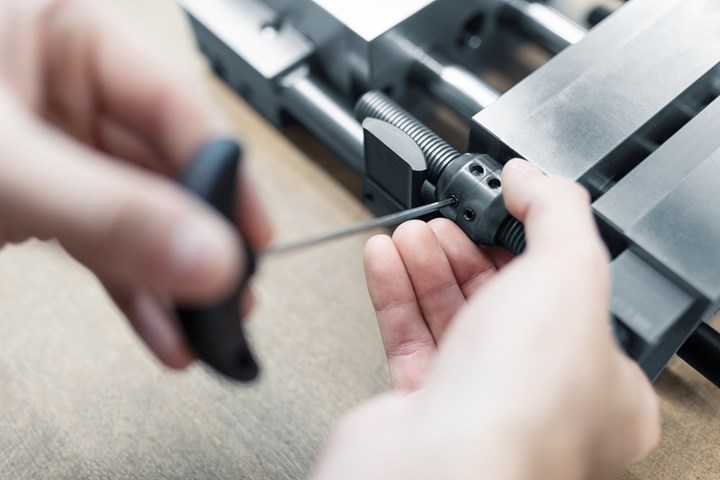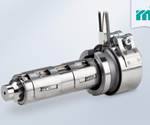Tooling: Latch Lock for 3-Plate Molds
An alternative to round- or flat-latch models, this new lock’s simple mechanical function results in a compact design and reduced installation machining.
Meusburger says the new E 1817 latch lock can replace round- or flat-latch locks as a compact reliable solution to control molds with two split lines. With the E 1817 Latch Lock, when the mold is opened at the first split line, it is done with a maximum permissible pulling force of 14 kN per latch lock. The puller inserted in the plate then pulls the floating plate to the desired stroke.
This stroke is determined by the position of the cam, which can be adjusted on the spindle in increments from 6 to 165 mm. The position is fixed by locking the two cam halves, which eliminates any play in the spindle.
As soon as the rocker lever makes contact with the cams, the latch arm is steered over the puller and the second split line face is released and can be opened. The wear-resistant rocker lever is DLC coated. The integrated system compression spring in the latch arm, brings the lever back to the neutral position after each operation.

Meusburger’s E 1817 Latch Lock features fine-tuned spindle adjustments from 6 to 165 mm.
Related Content
-
Design Your Tools for Moldability ... and Maintenance
In the initial design phase, when considering the structure and elements of the tool, are you designing them to be maintenance friendly? Canon Virginia has used this approach and preventive maintenance to make tool replacement a thing of the past. You can, too. Here’s how.
-
Three Key Decisions for an Optimal Ejection System
When determining the best ejection option for a tool, molders must consider the ejector’s surface area, location and style.
-
Where and How to Vent Injection Molds: Part 3
Questioning several “rules of thumb” about venting injection molds.





